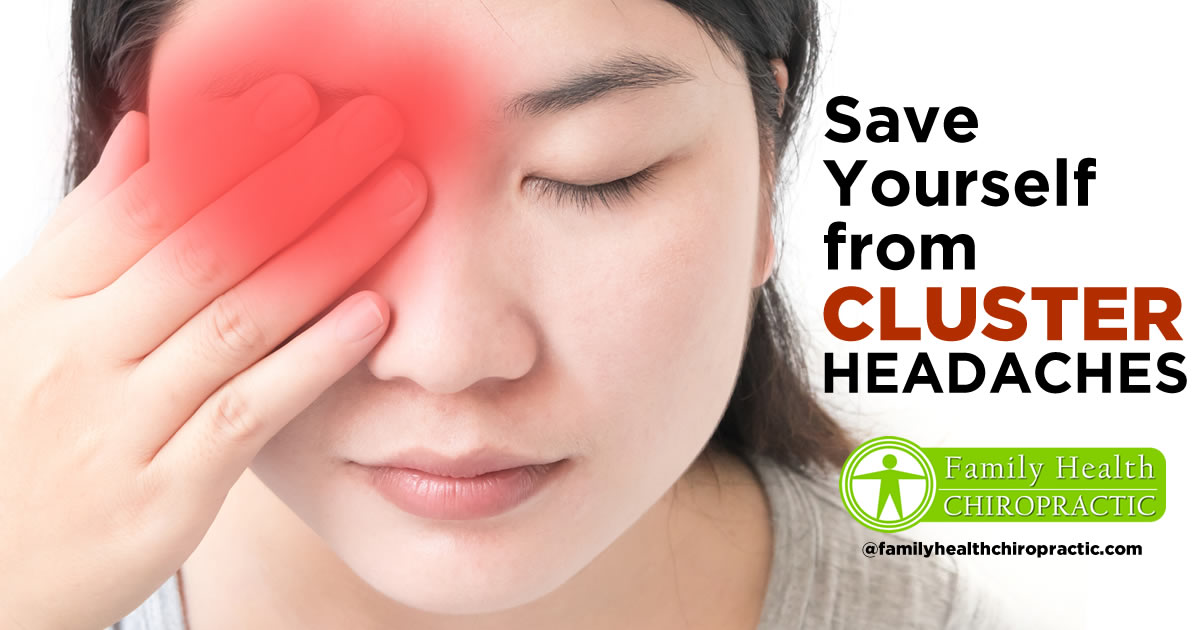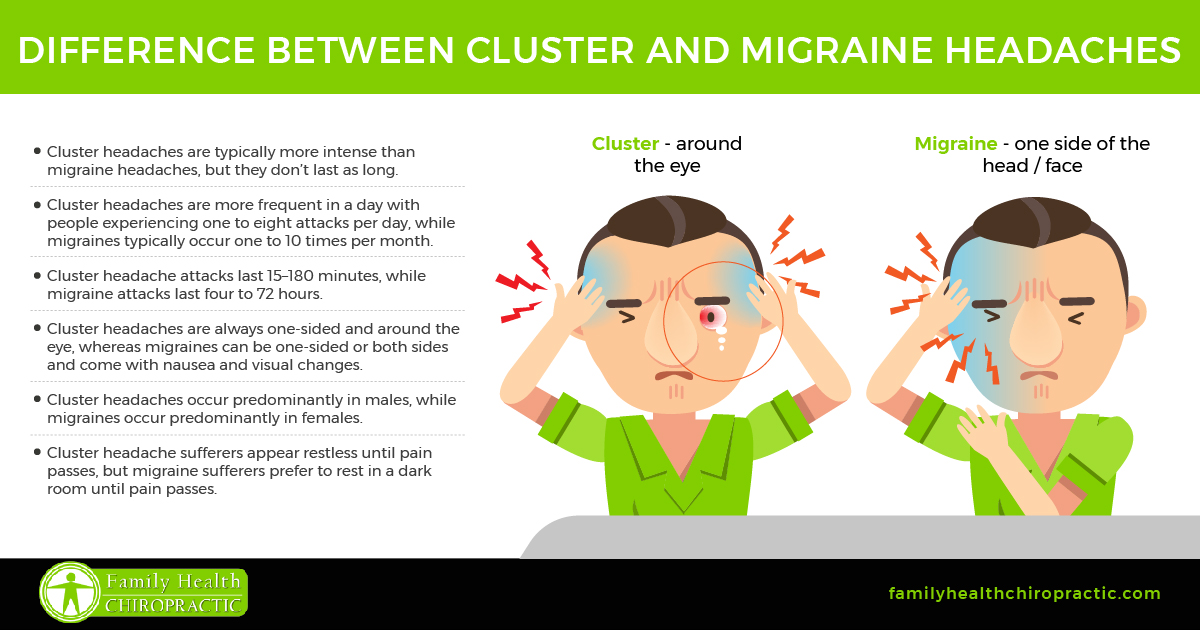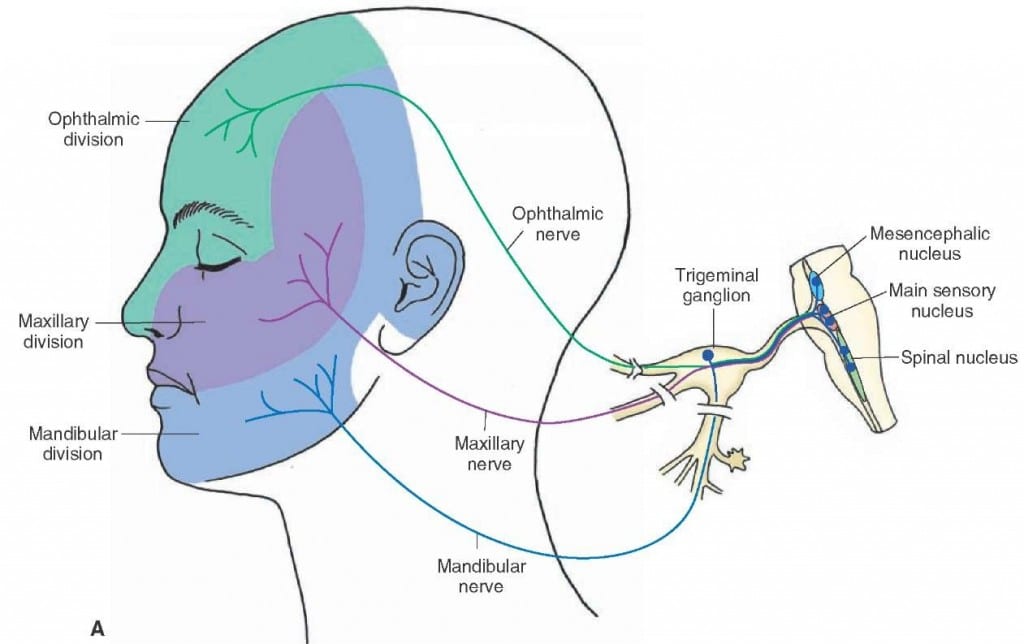Cluster Headaches have been described as the “worst pain known to medical science”. Of course it's hard to really quantify that statement.
How the do you know if you're experiencing cluster headaches? Here's a few ways that it's been described by actual patients:
- “Like a really really strong pressure, and then there’s a kind of burning sensation behind my eyeball.”
- “It feel's like someone’s jabbed a white-hot poker into your eye socket and is holding it there for 45 minutes to an hour and a half.”
- “Like I just got shot in the face by a Disney character who's singing It's a small world after all over and over”
- “It’s like a papercut in my eye, in the center of my head.”
- “A pain that's so sharp and excruciating, there's no talking or doing anything other than just screaming to try to get out of it.”
- “It feels like there's a little devil ripping the blood vessels apart behind my eye.”
Damn. These headaches are no joke.
This is also why they are considered one of the most painful afflictions known to mankind.
Women have even compared cluster headache pain to be equivalent to labor pain, while men express that it’s the worst pain they’ve ever felt.
Cluster's involve intense and relentless pain in or around one eye on one side of the head. The symptoms can sometimes be confused with a migraine, but there is one major difference.
This type of headache occurs in patterns, and it arises in cluster periods — or outbursts of frequent attacks that generally last from six to 12 weeks. A cluster period usually ends in remission, when there are no symptoms for months or even years.
Although the pain can be intense, these headaches are rare and the symptoms can be reduced or relieved with a mix of conventional and natural headache remedies.
In this article we will discuss the differences between cluster and migraine headaches and how to treat them naturally.
The Difference Between Cluster and Migraine Headaches
Cluster Headaches are so painful that doctors have reported patients who committed suicide because of them. These types of headaches are debilitating and make it difficult to distinguish between cluster and migraines.
That said, there are several ways in which you can tell the difference including:
- Cluster headaches are typically more intense than migraine headaches, but they don’t last as long.
- Cluster headaches are more frequent in a day with people experiencing one to eight attacks per day, while migraines typically occur one to 10 times per month.
- Cluster headache attacks last 15–180 minutes, while migraine attacks last four to 72 hours.
- Cluster headaches are always one-sided and around the eye, whereas migraines can be one-sided or both sides and come with nausea and visual changes.
- Cluster headaches occur predominantly in males, while migraines occur predominantly in females.
- Cluster headache sufferers appear restless until pain passes, but migraine sufferers prefer to rest in a dark room until pain passes.
What Causes Cluster Headaches?
No one knows for sure.
Cluster headaches are rare which means there is less information the medical community has to go off. We do know that cluster headaches occur predominantly in males, with a 9:1 ratio of males to females. They begin between the ages of 20 and 50 and tend to occur more in smokers.
It's currently accepted that the headache occurs when the nerve pathway in the base of the brain, called the trigeminal autonomic reflex pathway, is activated.
This main nerve is responsible for sensations in the face, so when it’s activated it causes eye pain — a major symptom of cluster headaches. The trigeminal nerve can also stimulate other groups of nerves that cause symptoms of cluster headaches, such as eye tearing and redness, nasal congestion, and discharge.
Cluster headaches are not caused by an underlying brain condition, like a tumor or aneurysm, but they do seem to come from the hypothalamus, a section of the brain that governs physiological functions, such as temperature, regulation, thirst, hunger, sleep, mood, sex drive and the release of hormones within the body.
A 2013 study conducted in China detected significant increases of functional correlation to the right hypothalamus in cluster headache patients during “in attack” periods in comparison to those during the “out of attack” periods. Researchers concluded that cluster headache patients have a dysfunction of brain function connectivity, mainly in brain regions that are related to pain processing.
Cluster headaches are commonly mistaken for allergies because they tend to occur in the spring and fall, which further suggests that the hypothalamus plays a role in this condition.
Natural Treatments for Cluster Headaches
Let’s get into the most effective natural treatments for cluster headaches and how they differ from a migraine or tension headache.
Lifestyle Recommendations to Treat Cluster Headaches
Optimize Your Sleep Schedule
Improving your sleep hygiene not only impacts overall health and wellness, but it's also effective in helping people who suffer from cluster headaches. Cluster periods may actually begin when there are changes in your normal sleep routine, so it helps to stay consistent.
Avoid Alcohol and Tobacco
This should really go without saying, but alcohol and tobacco use are not so healthy. In addition, they can both increase the frequency of cluster headache attacks. I'm certainly not someone who abstains from alcohol, but if you suffer from cluster headaches, avoid it!
Practice Deep Breathing Exercise
Deep breathing allows more oxygen into the brain, which can then provide relief during headache attacks. That’s what makes yoga such a great activity for headache suffers. Its physical exercise combined with breathing exercises have been found to alleviated headache symptoms.
Go For A Walk or Get Outdoors
People with cluster headaches experience a relief of symptoms after receiving oxygen during an attack. This can be done naturally by getting outdoors and taking deep breathes of fresh air.
Supplement Recommendations to Treat Cluster Headaches
Supplement with Magnesium
People who suffer from cluster headaches can have low blood levels of magnesium. Preliminary studies show that intravenous magnesium injections may relieve a cluster headache attack, and a magnesium deficiency can cause the pain from a cluster headaches to be greater than normal.
To relieve cluster headache symptoms and reduce attacks, take 600-1200 milligrams of magnesium three times a day or once (1200 mg).
It might help to take one capsule before bedtime because attacks are most common in middle of the night.
It would also be a good idea to eat magnesium-rich foods like spinach, chard, pumpkin seeds, yogurt, almonds, black beans, avocado and bananas can also be helpful.
Supplement with Vitamin B2
Vitamin B2 may decrease the severity and frequency of cluster headaches. Vitamin B2 acts as an antioxidant in the body, helping to maintain blood cells and boosting energy levels.
A vitamin B2 deficiency can result in nerve damage and inflammation, two conditions that may increase the intensity of cluster headaches. In a 2004 study published in the European Journal of Neurology, patients who received 400 milligrams of vitamin B2 capsules per day experienced less headache attacks than before supplementation.
Supplement with Melatonin
Melatonin is used as an adjunctive therapy in patients with cluster headaches who have incomplete relief of their headaches when using conventional treatments.
Some studies have found that melatonin treatment can rapidly alleviate cluster attacks but only in episodic cluster headache patients. Scientific experiments on melatonin have suggested that it may be more beneficial when used before the cluster period begins for the best results.
Psilocybin Mushrooms
These psychedelic mushrooms may seem like a strange natural treatment for incredibly painful cluster headaches, but many sufferers are turning to psilocybin mushrooms for relief when nothing else has worked.
Psilocybin is a classic hallucinogen, and case studies suggest that it may be effective for the treatment of cluster headaches.
A review conducted that Harvard Medical School analyzed the effects of psilocybin mushrooms on headache patients. Of the 26 participants, 22 reported that the mushrooms aborted the cluster headache attacks, 25 of 48 reported cluster period termination, and 18 or 19 users reported that the remission period was extended after psilocybin treatment. These reports suggest that further research on the effects of doses of psilocybin on cluster headaches may be warranted.





